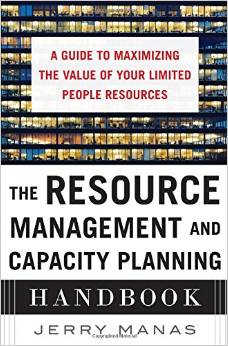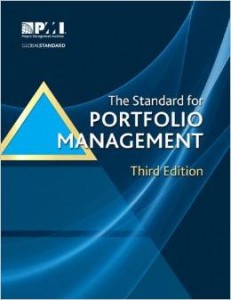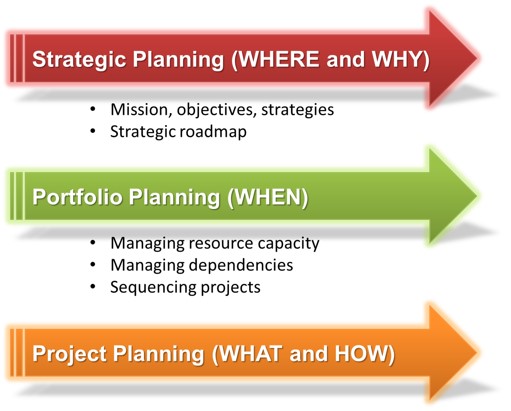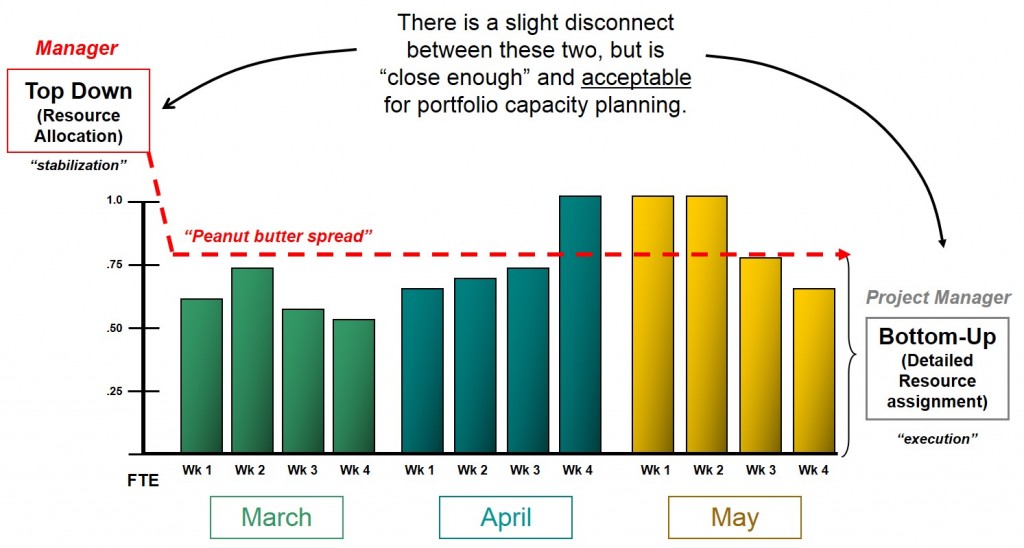Book Review
The Resource Management and Capacity Planning Handbook by Jerry Manas is the authoritative source for any organization wanting to improve its resource management practices in the context of portfolio management. The opening chapter does a great job of providing basic context of resource management and capacity planning and strongly leverages a benchmark study by Appleseed RMCP and expert practitioners in the field.
Organizations continue to struggle with the matter of resource management and “when you consider the constant change, lack of visibility into resource capacity, and no sense of which work is most important, the result is a perfect storm of resource management chaos.” In order to address this problem, Manas systematically covers key topics chapter by chapter that provide relevant help to companies seeking to improve. This book is not about mere theory, but gives literally hundreds of practical points based on corporate reality.
Chapter 2 addresses the road to maturity for improving resource management. I am a big believer in assessing organizational maturity, and Manas does a great job of acknowledging that organizations are on a road to maturity, and through the help of expert practitioners, gives examples of how organizations have matured their resource management processes. The chapter also addresses the matter of time tracking and does an excellent job of providing a balanced view of why to do it and how to make it work.
In chapter 3, Manas presents a systems approach for diagnosing the root causes of poor resource management. He brings out a number of points that should strike a chord in any organizations. In the latter half of the chapter, he uses systems thinking to deep dive on estimating resources and tasks. 
Chapter 4 addresses the much needed topic of leadership and organizational change management. I was very pleased to see an entire chapter devoted to these two subjects, because most of the time in portfolio management literature, the emphasis is either on process or tools, with little regard for the people dimension (which is very critical). Much of the chapter is spent on the “50 ways to lead your users”, which is a systematic and structured approach to leading change in the organization.
Chapter 5 addresses key roles for making resource management and capacity planning successful. One of the key takeaways is that successful organizations very often have dedicated resources to support capacity planning exercises. He also takes time explaining the expanding role of the PMO.
Chapter 6 is an enjoyable chapter on strategic alignment and how not to manage resource capacity management like failed military leaders in the past.
Chapter 7 is a great chapter focusing on the human side of resource management. As chapter 4 addressed the people side of leadership and change management, this chapter does an equally good job of explaining why it is important for organizations to pay attention to the human side of project execution and resource productivity when trying to improve resource management.
Chapter 8 expands upon a white paper Manas wrote called “the Capacity Quadrant”. This chapter speaks more frankly about the topic of portfolio management and the need for visibility, prioritization, optimization, and integration of the portfolio. I loved his white paper on the topic and felt that this chapter could have been moved up earlier in the book to provide a clearer view of resource management and capacity planning within the context of project portfolio management.
The final chapter, chapter 9, concludes with industry specific challenges of resource management and capacity planning. This chapter turned out to be the cherry on top as it provided insight into unique challenges faced by different industries. Learning about challenges faced by other industries actually gives greater context to the capacity planning problem and puts readers on the alert for identifying and solving these problems in their own company.
My Conclusion to Resource Management and Capacity Planning
The Resource Management and Capacity Planning Handbook is a must-have book for PMO directors and senior leaders struggling with making the best use of limited resources. Jerry Manas has a great writing style that makes the book easy to read and easy to understand. He also does a fantastic job of blending theory with reality by explaining key topics and then providing numerous tips on how to be more successful with resource management.
Rating: 5 out of 5 stars



